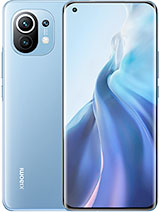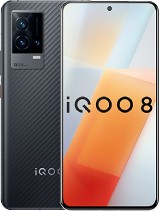Vivo iQOO 7 vs Xiaomi Mi 11 full comparison Part 1: still that Snapdragon 888 By gizmochina
Hello and welcome to gizmo china, I'm Kiran the second smartphone powered by the snapdragon 888. The iq7 was released a few days ago. If you look at all the models released by IQ, it's quite hard to define the brand into one specific category. The first haiku model was released as a gaming phone, but for attracting a wider segment of users, they gradually shifted their focus from being a gaming brand into one that released affordable flagships. But how about the iq7? Is it a high performance gaming phone, or is it something more? How about we bring back the Xiaomi, me 11 and compare the two which model do you think will take the lead in terms of software optimization for the snapdragon 888. Keep watching this comparison to find the answers.
In the last video we showed you the world's fastest charging smartphone, the iq7 with 120 watt. Charging waiting for a phone to get fully charged has never been so delightful. It took us only 10 minutes to get back to 80 percent of power and 15 to get to 100, but you still need to know that the 4 000 milliampere battery on the phone is pretty small, especially when the light and thin body of the mi 11 could have a 4 600 William hour battery with wireless charging weighing 210 grams, the iq7 charging solution without wireless charging feels incomplete, but anyway the 120 watt charger is luckily included inside the box. These are strange times indeed. After all, we have to actually check if the charger is included in the smartphone box.
Okay, let's take a look at the supercharger. Well, it's really heavy, almost as heavy as the phone. Even when you compare to the mi 10 ultras 120 watt charger, it's still pretty big, so portability is one compromise. You'll have to live with for such an amazing charging efficiency, we'll talk more about their battery life when we get into the gaming test and now, let's look at their designs. Thanks to the lighter body and the curved display, the mi 11 did feel a bit better when holding it in hand, but the iq7's excellent, build quality and design grew on me after a week's use.
The big difference between the two designs is a display. The me11 no doubt took the lead in display comparison thanks to its 2k 120 hertz curved display. It uses a Samsung AMOLED e4 panel, with a better 10 bit color depth with high resolution, while the iq7's e3 flat display features 8-bit colors and 120 hertz refresh rate with a 1080p resolution, which will be more common among the 2021 high performance phones, and we guess Redmi will also use a similar display on their k40 series, which, by the way, is launching soon for those that are worried about curved displays and the potential for miss touches. The iq7 can be a good option, but, to be honest, the m11 has done pretty well on solving most mist ouch issues. So if this was your concern with the mi 11, you can put your worry aside.
The good news is that the mi 11 and the iq7 both support, HDR, 10, plus and high sampling rate, so both these displays are able to present excellent HDR contents and support superfast touch response. I also have to add that the black back design of the iq7 is pretty good. It's rare to see a brand like haiku put so much effort into the black colored variants, which are usually very plain this time. The black variant of the iq7 has an optical stripe finish, which looks like the texture on the surface of a luxury suitcase. But when you touch the surface, you'll find that it's flat.
So it's just a refraction of the light that makes it look uneven, and the camera module is also a new design for VIVO phones, which looks more comfortable than what we have on the mi 11. And for better gaming operations. The iq7 features two pressure sensitive buttons under the display, which reminds us of a gaming phone brand black shark, and that's the reason why we still consider the iq7 as a gaming phone. However, compared to those phones with shoulder buttons, the pressure sensitive buttons are more likely to cause mist ouch in some games, but if we compare it to the mi 11 without such buttons, no doubt that these additional buttons of the iq7 can boost your gaming performance, especially in games like PUBG requiring fast response and complicated operations. The iq7 can definitely help you get more enemies.
The iq7 is also equipped with dual vibrating motors for more immersive gaming experience. For example, the iq7 has customized the vibration for PUBG when a vehicle moves from left to right. The vibration will also imitate this movement, which gives you a really immersive experience, and you get customized vibrations from your firing gun too. The vibration, strength and frequency are up to the gun's recoil and cyclic rate, there's also a custom vibration for when you're getting shot with only one vibration motor. There is no such customization during gameplay on the mi 11.
Since we have started talking about gaming, let's turn our attention back to each model's performance. On the mi 11 review. We found that the snapdragon 888 may have potential issues like easily heating up and high power consumption, but what about the iq7? Well, the snapdragon 888 inside iq7 is still the same snapdragon 888 found in the mi 11. However, the chipset strategies of these two models are pretty different. Before we show our results, we want to remind you that we've tried our best to control the factors that might affect their performance at the same level, such as the surrounding temperature and the consistent game scenes since the gap between their benchmark results was pretty close to each other, and it's not exactly telling the story about the snapdragon 888, we're not going to say more about the individual benchmark scores.
So, let's find out the answer directly from their real-life gaming performance thanks to the excellent game, optimization in PUBG under HDR graphics. Both the models ran the game at an extremely stable frame rate of 60 hertz, which is also the best performance that we could get in PUBG. So when playing PUBG mobile, there is no way to assess which one is better at gaming and performance. Then we moved on to genii impact, which is one of the most challenging games on android in this game. The real difference between the optimization strategies of the two companies came into the spotlight.
The iq7 is actually quicker than Xiaomi and throttling down the clock, speed of the main core to stabilize the temperature. This translates into a relatively lower and fluctuating frame rate in the 30-minute test. The iq7 ran the game at 48.66 fps on average, which is not as good as the 52.6 of the mi 11. For me 11. Instead, the work was mainly given to the three mid-cores.
Although me 11's frame rate figure is better than the iq7, this came at the cost of higher temperatures and more power consumption. Now, let's look at another challenge: simian legends in this game. Our results were verified once again, but the gap between the two models was even bigger. The iq7 throttled down the performance in just three minutes, and then it failed to return to a stable running state. The frame rate started jumping up and down, and the big CPU core kept working at a low frequency level, while the mi 11 situations is much better than the iq7.
Although there were several instances of a reduction in the clock speed, the CPU of the mi 11 was definitely working harder than the iq7. So eventually we got an average frame rate of 52.09 fps on the mi 11 and 42.45 for the iq7. But it's important to note that the surface of the m11 easily heated up to 53 degrees Celsius, while the iq7 could control it within 47 degrees Celsius and the total power output of the mi 11 reached 9.5 watts on an average, while the figure for the iq7 was only 6.7 watts. So, just like the mi 11, it looks like the performance down. Throttling is also prevalent on the iq7.
However, the iq7 is likely to be more conservative in its CPU strategy for a better cooling effect and lower power consumption, but consequently never really unleashes snapdragon 888's true potential. Similarly, while the m11 was able to perform better in heavy games like pension impact and simian legends, this came with the cost of overheating and more power consumption. Personally, we prefer the mi 11s optimization strategy because, as the latest flagship chipset, it's unreasonable to limit its performance, we are disappointed with snapdragon 888, because it does promise better performance. It remains to be seen if a phone can tap into the chip's full potential without overheating. One good thing for the mi 11 is its large battery, so the battery consumption, while gaming on the m11, is almost the same as what we can have on the iq7.
In the 30 minutes gaming test of simian legend, we lost 20 power on the mi 11, while we lost 21 of power on the iq7, so we believe the reason why haiku is applying such a conservative strategy on the iq7 is because it realizes the limitation of the phone's, smaller 4000mah battery and, more importantly, it looks like companies will have to work around the limitations of the snapdragon 888 in terms of cooling and power consumption. This year you.
Source : gizmochina


























